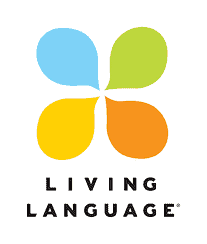Living Language Online Course

Summary
UPDATE – it appears that the online course Living Language no longer exists. This review covers the old course when it did exist. You can however find a series of books with this name available on amazon.
Though the information itself is useful, Living Language’s presentation reads more like a database than an educational/interactive tool.
Again, a lot of the information is there, but it’s scattered. Additionally, some of that information appears incorrect.
Cheaper options offer the same amount of content with more interactive features.
I Like
- You can hop around between levels and topics, including Beginner and Advanced materials.
- The subscription comes with a grammar guide, glossary, and forum access.
- There’s a decent variety of games, including some games I hadn’t played before.
I Don’t Like
- Although the games are fun, they get stale pretty quickly. It’s easy to guess at answers, thereby completing levels without really having learned.
- The system doesn’t keep track of your mistakes, so it’s hard to know what areas you need to improve in.
- I found several translation and presentation errors that made me question the rest of the material.
Price
An annual plan costs $150, and half a year costs $75. Three months is $50 and 1 month is $39.
An Overview of Living Language
Living Language offers you the opportunity to choose between over 20 languages. Once you pick your language, you’re taken to the home screen which has options for Essential, Intermediate, and Advanced categories. You can start with any of these options and jump back and forth between them.

After making your choice, you’ll start with Lesson 1.
Each lesson will include flashcards all related to a specific topic, such as food or clothing. The flashcards will feature the word in your chosen language beside a picture, and if you click on it, you can hear that word spoken. Once you complete the flashcards, you’ll move onto a grammar/vocab summary, followed by more flashcards.
Then, you’ll end the level by listening to a conversation and playing some games.

In truth, you can hop around these lessons as well, starting with the games and ending with Vocabulary 1 or 2. You can also hop in, listen to Vocabulary 2, and then switch to a different category entirely. Though the site provides a suggested order, it has no qualms with you following your own plan.
The number of lessons per category varies, as does the amount of words per level. Additionally, the games are worth certain percentage points, and your completion rate will go up as you work your way through them. You’ll also earn badges, medals, and stickers each time you beat a game.
However, as previously stated, simply beating a game doesn’t mean that you’re learning.


Getting Started with the Online Course
It’s fairly simple to get started with Living Language. Rather than sign up, you can opt for the free week option. I’d certainly suggest this option, as it will give you an idea of whether or not the site is right for you. However, it’s worth noting that the free version is limited to a few lessons from the Essential category.
After signing up, you can dive right into the learning materials. As previously stated, you can start with any category or level. You can even jump directly into the games. Of course, going in order makes the most sense for a beginner, and it might also be useful for someone more advanced; it can be hard to predict which lessons cover which words, and if you skip around, you might miss something important.

Lessons and Games
Assuming you attempt the lessons in order, the first lesson includes vocabulary flashcards on the topic of Greetings.
You can mark these cards as “Send to Mastered,” signifying that you know them fully. However, mastering a material doesn’t appear to change anything; it simply results in the word being removed from rotation. Once all the cards in a lesson are marked as Mastered, you have the chance to put them back in the rotation by choosing “Send to Study.”
After completing this vocab section, you’ll move onto reading material about the vocabulary and/or grammar you’ve learned. From there, you’ll listen to a conversation, which might bring in words you haven’t learned before. Oddly, the speaker’s gender doesn’t always match the speaker’s honorific (ex. a male speaker would sometimes speak for someone with the honorific Mademoiselle).
The games are definitely the most entertaining part of the site in my opinion.
There’s a large variety, including word searches, sentence builders, and fill in the blanks. You can also pop bubbles or answer multiple-choice questions in order to defeat a dragon.
At first, I enjoyed the games and felt like I was doing well with the material. However, after several rounds, the novelty of these games wore off. Additionally, it’s easy to guess the correct answers to several of the games, meaning you might win without really covering the material. I wasn’t trying to outsmart the games — I was simply trying to win them. In this case, winning has nothing to do with comprehension or retention; it simply meant I’d figured out the patterns.
My French knowledge is fairly basic, but I was able to complete several games in the Advanced category without reading any of the lessons beforehand.





If you complete a game with minimal errors, you’ll earn a gold badge. If you win with several errors, you’ll earn a silver or bronze badge. You’ll also earn a certain amount of percentage points, which appear on the home page under each category. And after multiple wins of the same game-type, you’ll start collecting badges.
Admittedly, I was curious to see what badges were available, and I think they work as a fun incentive. In this way, Living Language is kind of like a video game where you want to achieve 100% completion–but again, this isn’t necessarily helpful when trying to gauge your knowledge of the materials.
Once you finish your first grouping of lessons, you’ll move onto the next level, which will be based on a different subject. From there on, there’s not much variation in lesson set-up: it’s flashcards, a summary, a conversation, and games. It should also be noted that you have to click on the games yourself, or the lesson will simply skip them and move onto the next set of flashcards.

Oddly, some of the images don’t seem to align with the vocab. While I didn’t notice a ton of errors, it was enough to make me worry about the correctness of other translations, especially because of errors other users spotted.

Plans and Prices
Along with the monthly version, you can also purchase annual plans, 6-month plans, and 3-month plans. Value-wise, the 6-month plan and annual plan cost the same when looking at the price per month, whereas the 1-month plan is the most expensive and the 3-month plan falls somewhere between them.

A one month subscription costs $39, 3 months costs $50, 6 months costs $75, and 1 year costs $150.
Some languages don’t offer monthly versions, while others offer specialty courses for travel or specific occupations. For instance, Spanish lessons are available in Business for three-month increments at $60.
Furthermore, traditional book and CD sets are available at various price points. As I didn’t use these options, I can’t speak to their value, though reviews on Amazon are mixed.
Final Thoughts
Living Language provides several resources for language learning, including online courses, specialty courses, and CD/textbook options. While I can’t speak to all of these resources, the French Comprehensive course wasn’t very useful for me. The flashcards and grammar lessons are fairly basic, and the games, although fun at first, ultimately don’t reveal much about what you’ve learned.
Living Language could do more to take advantage of its online platform. The games and audio are a good start, but the site’s actual test value is missing. Additionally, while these resources could potentially be useful, there are cheaper options out there that offer more interactive features and in-depth explanations.
While I don’t think it will hurt your language learning efforts, I’d recommend looking at other resources first. As each language has different resources available, our top recommendations would depend on the language you’re studying. To find the ones we recommend, click on the language you’re learning below.

